Install the Commvault software packages on the production CommServe host.
Before You Begin
-
Verify that the prerequisites needed to setup the environment are available before setting up the CommServe LiveSync feature. For more information on the components needed to setup CommServe LiveSyncs, see Planning for the CommServe LiveSync Setup.
-
Download the Commvault software installation packages from the Commvault Store.
Procedure
-
Log on to the production CommServe host as an Administrator or as a member of the Administrator group on that computer.
-
Launch the Commvault software installation package.
The Download Manager dialog box is displayed.
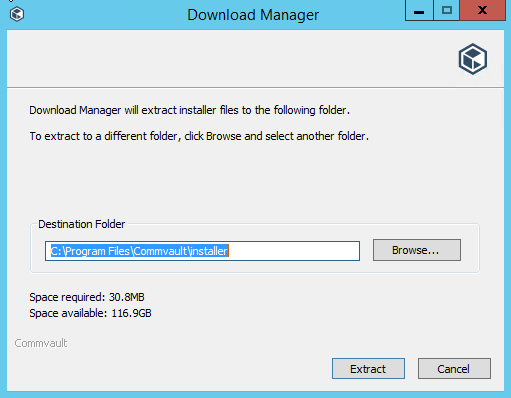
-
Click Extract.
The Language Selection page is displayed.
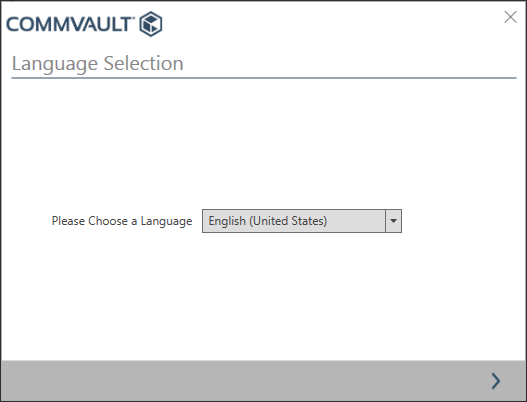
-
Select the language from the Please Choose a Language list, and then click the arrow to proceed.
The Welcome page is displayed.
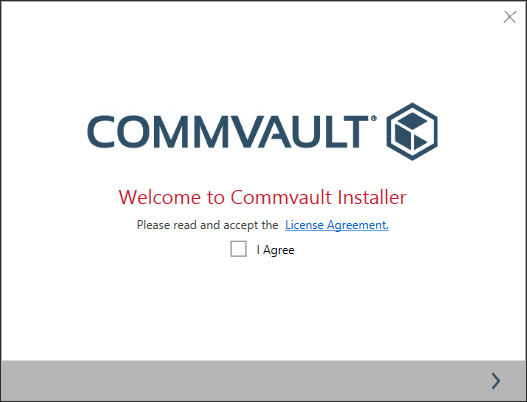
-
Select the I Agree check box, and then click the arrow to proceed.
The Choose the Installation Type page is displayed.

-
Click Install packages on this computer, and then click the arrow to proceed.
The Install Option page appears.
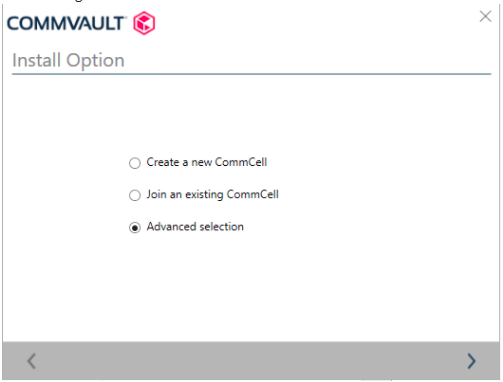
-
Select Advanced selection, and then click the arrow to proceed.
The Select Packages page is displayed.

-
Select the following check boxes, and then click the arrow to proceed.
-
CommServe check box
-
CommServe Failover check box (Scroll through the list to locate this package.)
Note
The CommServe Failover package automatically installs the SQL Server agent and the CommServe Failover packages in a new instance. (No additional user intervention is needed.)
The Select Maintenance Release page is displayed.
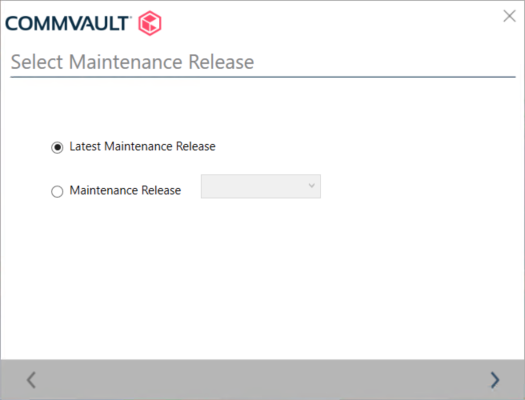
-
-
Choose the necessary option to install maintenance releases, and then click the arrow to proceed.
Tip
Make a note of the selected option. It is important to install the same maintenance releases for all packages in the production and standby CommServe hosts.
The Failover Install Option page is displayed.
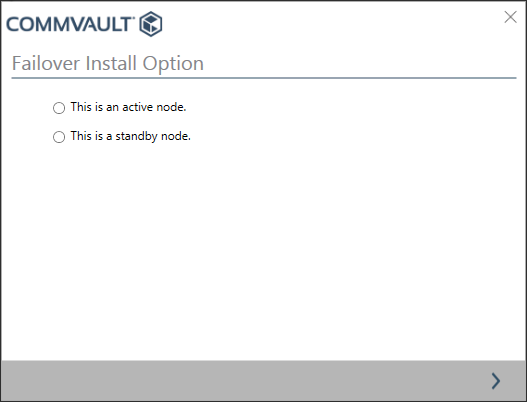
-
Choose This is an active node option, and then click the arrow to proceed.
The Installation Path page is displayed.
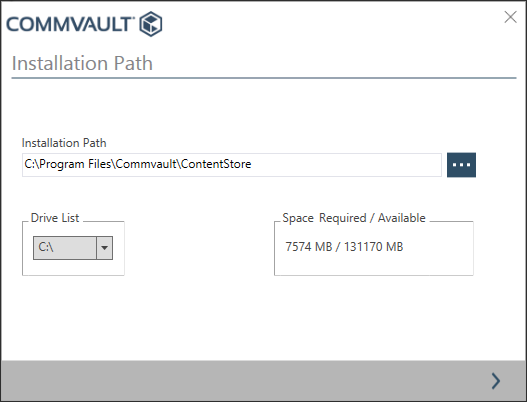
-
Verify the installation path, and then click the arrow to proceed.
Tip
If you change the default path, make a note of the path. It is important to have the same path in the production and standby CommServe hosts.
The Index Cache Path page is displayed.
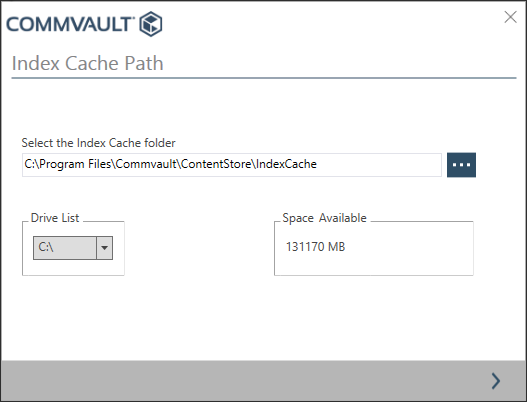
-
Verify the index cache path, and then click the arrow to proceed.
Tip
If you change the default path, make a note of the path. It is important to have the same path in the production and standby CommServe hosts.
The Database Engine Installation Path page is displayed.

-
Verify the database engine installation path (or specify a new path) and then click the arrow to proceed. (This is the path for installing Microsoft SQL Server.)
The CommServe Database Installation Path page is displayed.
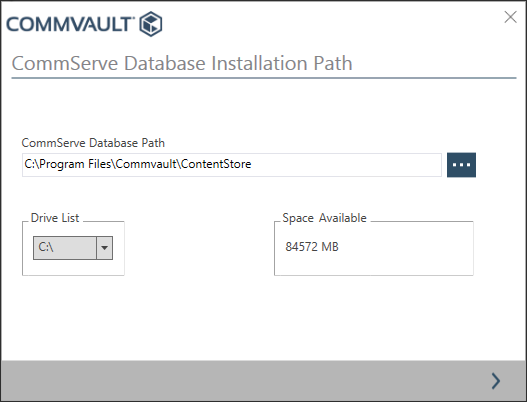
-
Verify the CommServe database installation path (or specify a new path) and then click the arrow to proceed. (This is the path for storing the CommServe server databases.)
The Disaster Recovery Path page is displayed.
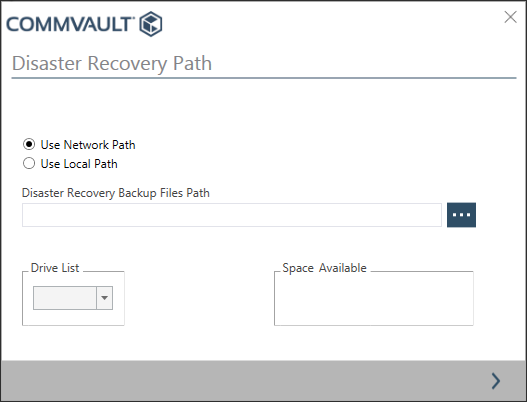
-
Choose either the Use Network Path or the Use Local Path option and then type the path in the Disaster Recovery Backup Files Path box and then click the arrow to proceed.
The Configure Proxy Service page is displayed.
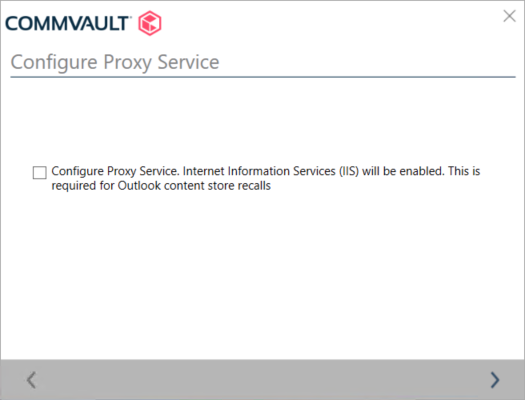
-
Choose the Configure Proxy Service option, if you plan to perform Outlook Content Store recalls from the CommServe, and then click the arrow to proceed.
The Installation Summary page is displayed.
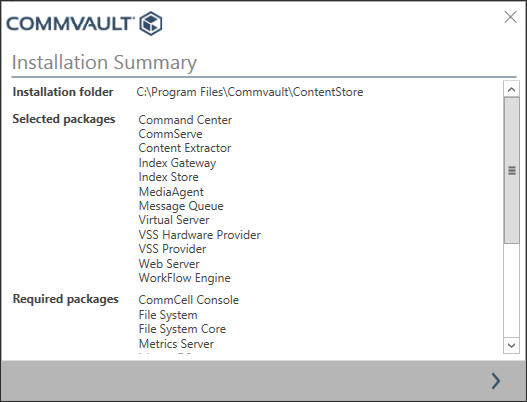
-
Verify the summary and then click the arrow to proceed.
The Install Status page is displayed.
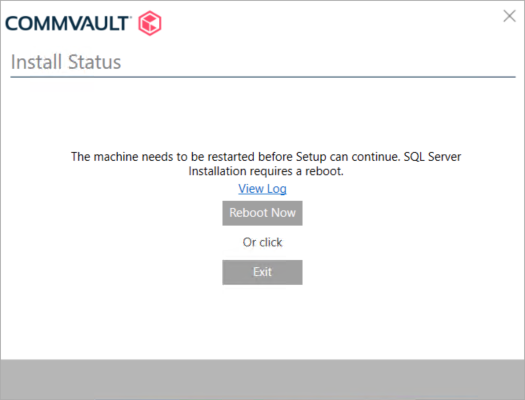
-
Click the Reboot Now option.
After the reboot, the installer will automatically resume.
Tip
If the installer does not start automatically, resume the installation by launching Setup.exe from the Destination Folder specified in step 2 above.
The software installs the prerequisite binaries for setting up the CommServe server. This process may take a few minutes.
The Client Computer Information page is displayed.
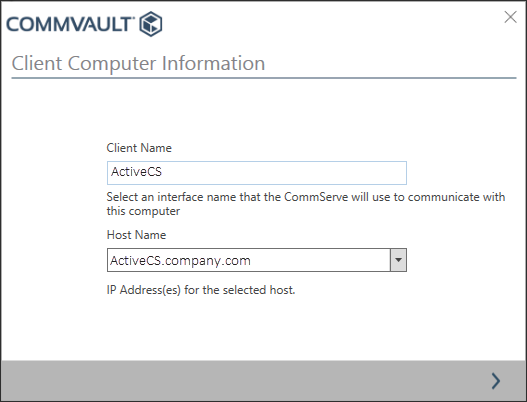
-
Verify/modify the names and then click the arrow to proceed.
-
Client Name is the name of the CommServe client that will be displayed in user interfaces like Command Center / CommCell Console.
-
Host Name is the physical name (FQDN) of the server.
The Client Name and Host Name prompts are for the CommServe client in the production CommServe host. (This is the CommServe client installed in Instance001. Note that this is the name used by clients to connect to this CommServe when it is active.)
Tip
Choose a meaningful Client Name to clearly differentiate this client in the user interfaces like Command Center / CommCell Console. For example, you can add the words Active or Production to differentiate it from the Standby CommServe client.
Make a note of the fully qualified domain name (FQDN) that is displayed in the Host Name box. You will need to install the SQL clients in both the production host and the standby CommServe host.
The Database Install Option page is displayed.

-
-
Choose the Create New Database option, and then click the arrow to proceed.
The software creates the databases and services. This process may take a few minutes.
The Commvault ID page is displayed.
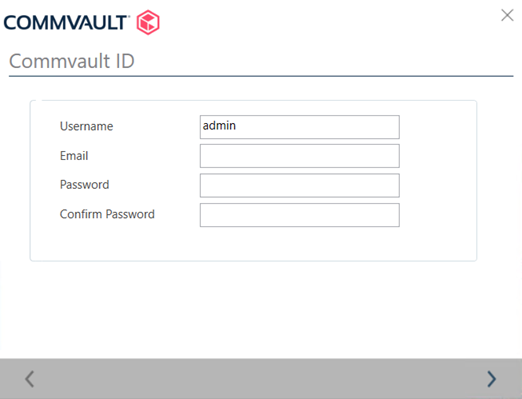
-
Specify the account details for the admin account, and then click the arrow to proceed.
Tip
Make a note of the account details. You will need the account details to install the SQL clients in both the production host and the standby CommServe host.
The software configures the CommServe setup. This process may take a few minutes.
Note
This completes the CommServe installation and the following prompts are displayed for installing the SQL client.
The Select Maintenance Release page is displayed.

-
Select the same option that you selected for the Maintenance Releases during the CommServe installation (above), and then click the arrow to proceed.
The Installation Path page is displayed.
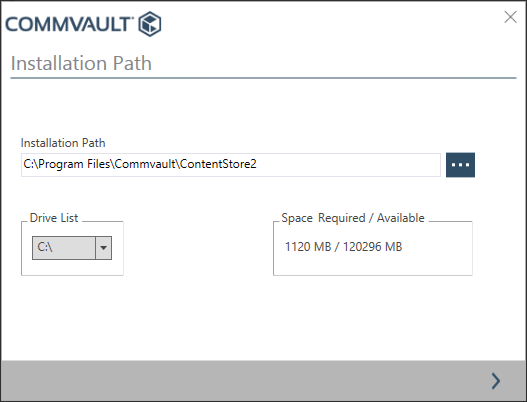
-
Verify the path (or specify a new path) for the SQL client, and then click the arrow to proceed.
The software installs the binaries for setting up the SQL client. This process may take a few minutes.
The Miscellaneous Configuration Options page is displayed.
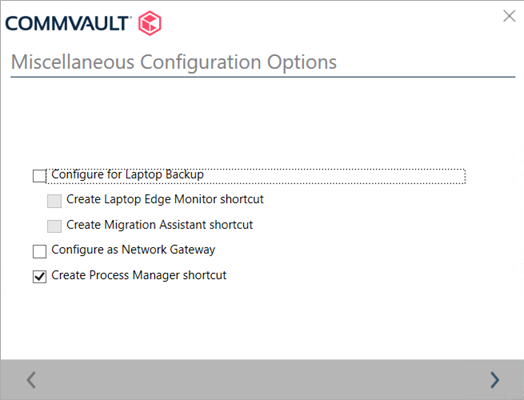
-
Select the necessary configuration options, and then click the arrow to proceed.
The Client Computer Information page is displayed.

-
Verify/modify the names and then click the arrow to proceed.
-
Client Name is the name of the SQL client that will be displayed in user interfaces like Command Center / CommCell Console.
-
Host Name is the physical name (FQDN) of the server.
The Client Name and Host Name prompts are for the SQL client in the production CommServe host. (This is the standalone SQL agent installed in Instance002 which is used for backing up the SQL database from the production CommServe host. Note that this is NOT the name used by clients to connect to this CommServe host when it is active - the CommServe Client name used by clients, was already provided in Step 18.)
Tip
Choose a meaningful Client Name to clearly differentiate this client in the user interfaces like Command Center / CommCell Console. For example, you can add the word SQL to differentiate it from the CommServe client.
The Server Information page is displayed.

-
-
Select / enter the following information:
-
Select the CommServe will connect to this computer to finish registration later option if the CommServe computer must initiate communications with the client.
For more information about configuring direct connections from the CommServe computer, see Configuring Direct Connections from the CommServe Computer to the Client.
-
Type the Fully Qualified Domain Name (FQDN) of the production CommServe host, and then click the arrow to proceed.
This is the CommServe host name that you noted while installing the production CommServe host in step 18.
The Server Authentication page is displayed.
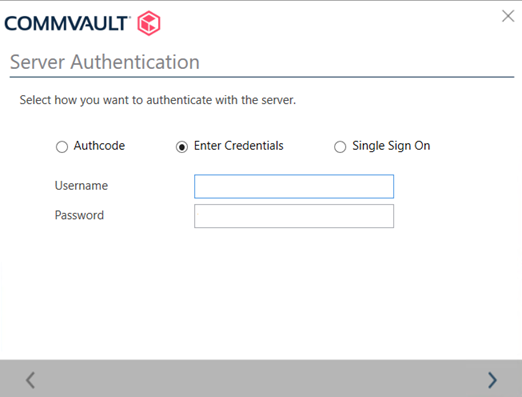
-
-
Choose Enter Credentials option, add the credentials to the admin account, and then click the arrow to proceed.
Tip
These credential are from the account details that you added in the Commvault ID page, during the CommServe installation above.
The software installs the binaries for setting up the SQL client. This process may take a few minutes.
A message similar to the following is displayed:
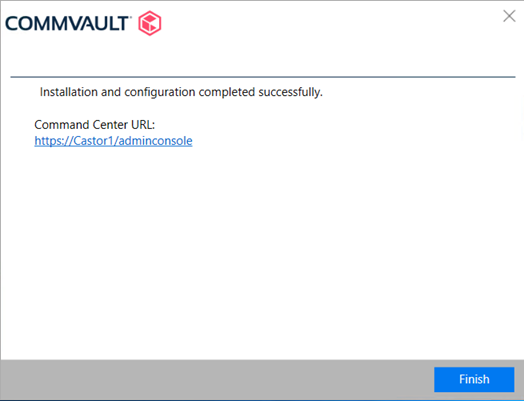
-
Click Finish to complete the installation.
Notes
-
To troubleshoot errors that occur before the installation summary page, check the %allusersprofile%\Commvault Systems\Galaxy\LogFiles\Install.log file.
-
If the error occurs after the summary page, then check the installation logs in the software_installation_directory\Log Files folder.
What to Do Next
Install the Commvault software packages on the standby CommServe host.